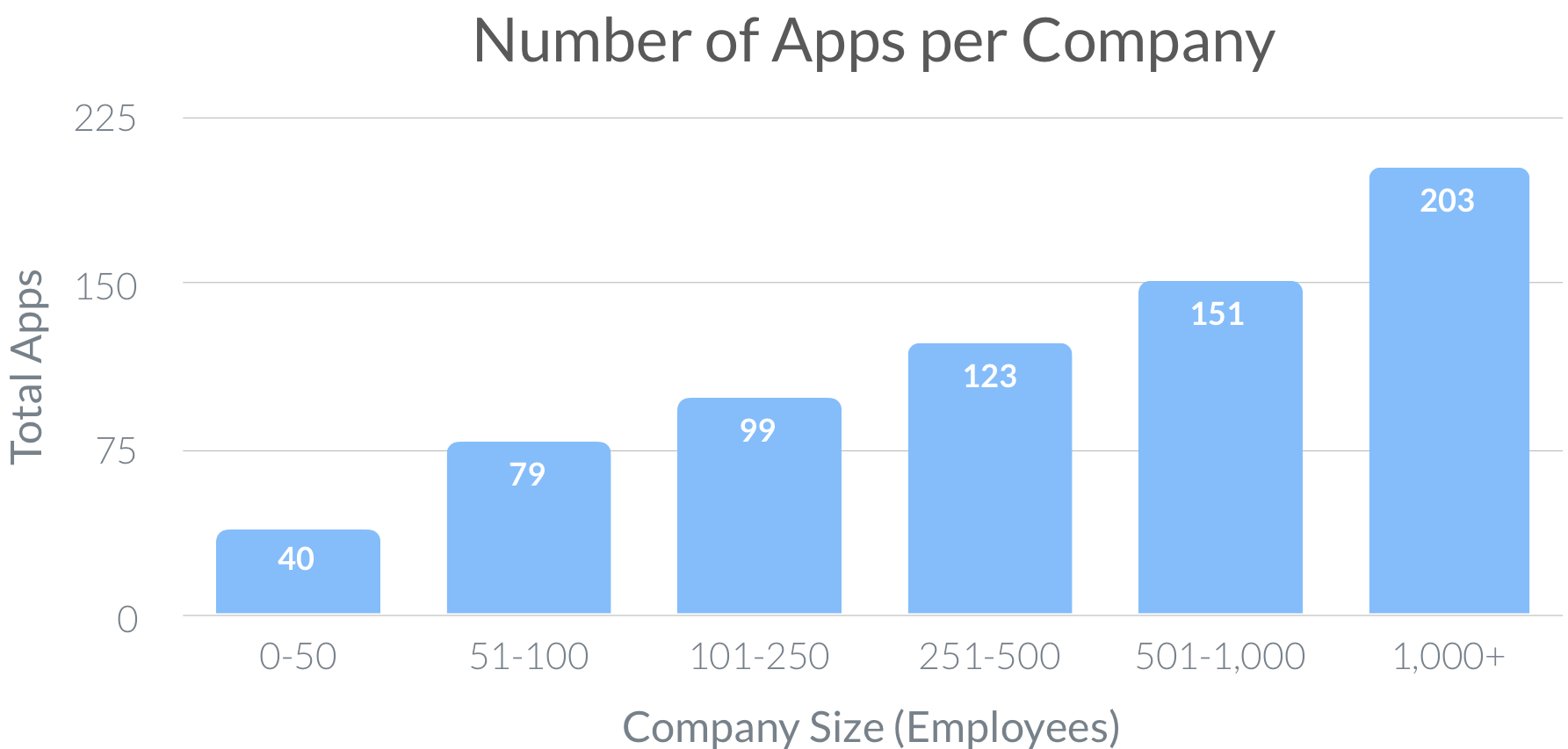3 Reasons Why GTM Data is Closely Linked to B2B Startup Growth
It's common to think of data as just an operational component for sales and marketing teams. But did you know that the quality of your data can...

When growth flatlines for investor-backed tech companies, board members start pressing the CEO for answers...
“What’s going on?" "Can you get back on plan?" "How are you going to right the ship?”
CEOs and management teams often cite competition or business model challenges as culprits for slow growth. Other macro factors such as shifting market conditions, governmental bureaucracy, or economic downturns are sometimes blamed.
Rarely is poor data integrity mentioned as the reason for stalling out.
What if growth is stalling out because leadership teams can’t get the accurate data they need to make good decisions?
Salesforce and Data.com report that the average business loses 30 percent of its annual revenue to poor data quality, 90 percent of the contact records in their average customer contact databases are incomplete, and at least 20 percent of contact records are completely useless.
Unlike the highly regulated healthcare, pharmaceutical, or financial services industries, tech businesses (especially in sales and marketing) have no compliance regulations to follow or third party auditors to fear.
Strict data protocols are seldom enforced because most go-to-market teams do not consider invalid or corrupt data a major risk to the business. That's a big mistake.
In fact, dirty data and sloppy processes fuel poor decision-making, which in turn leads to friction in sales and marketing and precious time and capital wasted on underperforming people and strategies.
In order to shed light on the data integrity epidemic among tech/SaaS go-to-market teams, we’ve highlighted 17 obstacles to data integrity:

A data model organizes different data elements, defines each data element, standardizes the relationships between data elements, and does it all with business processes and data reporting requirements in mind.
In the sales and marketing world, data model creation is a fundamental and foundational step toward data integrity, but all too often creating a data model is ignored or done on the fly when it’s too late. There are three main obstacles we’ve identified around data modeling (or lack thereof).
Before buying any technology, creating any website, or making any phone call, go-to-market leaders should start by asking, “What data do we need to know and how do we need to look at it to make good decisions in our business?”
That question should trigger the diagramming of all the processes, steps, and people involved in acquiring customers so that you can configure your tech stack to measure every single step!
Failing to spend time to structure your data model leads to poor technology implementation and forces data exporting and “spreadsheeting,” which sets off a chain reaction that almost always ends with corrupt data in your revenue tools.
Part of creating a data model is defining the data elements you need to capture. Failing to agree on specific definitions of leads, lead types, lead sources, lead stages/ratings, opportunity stages, and more, will lead sales and marketing leaders to waste time arguing over lead counts, revenue contributions, and MQL/SQL definitions. Clear definitions and one source of reporting truth is essential!
For companies that do build a data model, they often aren’t granular enough. Just like a factory floor has sensors at every step of the assembly line, go-to-market teams need to measure all the steps in their process of turning leads into customers. Volume metrics, conversion metrics, and duration metrics at EVERY point in the lead-to-customer journey are necessary to achieve this.
The marketing and sales technology landscape has exploded from ~1000 players to more than 7,000 in the last decade. Though the potential ability to track and attribute revenue has drastically improved, these technologies have become a friction point and a growth inhibitor when poorly implemented and maintained.
Too many SaaS companies lack the disciplined processes, staff expertise, and analytical prowess required to leverage the tools to drive high growth. The technologies often chosen opportunistically and reactively turned into obstacles to growth with potholes such as bad or missing data and broken or incomplete processes lurking around every turn.
The method that most SaaS companies employ to purchase and use technology is flawed, and it’s not necessarily a specific person's fault. At the beginning, most sales and marketing teams invest in a minimal toolset for CRM and email marketing to do basic data collection and communication.
Usually, no sole technology operations person is in charge of architecting, researching, and procuring the sales and marketing tools; rather it’s handled by a generalist or as a team.
As the company evolves and new strategies (such as SDR prospecting) are launched, they quickly realize that it’s difficult to find the answers they need with their current systems, so they look to upgrade to new tools inside their area of focus or expertise. They then spend hours of time demoing, trialing, and implementing different software.
At best, pockets of data excellence arise in one area or another, but that’s rare. At worst, this fragmented arms race leads to everyone (contributors, managers, VPs, and C-level) spending exorbitant amounts of time cobbling reports from data silos, reactively researching shiny new tools, and trying to plumb infrastructure together.
No one talks about these damaging side effects because they just accept it as the cost of building a business… but they are real:
With suboptimal tech stack architecture often comes process failures.
Example 1: Best practice lead response times are less than 5 minutes in order to have the best chance of turning an incoming lead into a customer. If your website, marketing automation system, CRM, sales acceleration software, and lead notification systems aren’t constructed properly, leads get dropped.
Example 2: Best practice lead follow-up processes include following a consistent (and persistent) cadence in order to reach a prospect and book a meeting. In the absence of cadences or if sales reps are using their own personal cadences, inconsistent processes will lead to depress pipeline growth.
Example 3: A new lead contacts your company through an inbound phone call or email to a general company inbox. Unless you have proper protocols in place for manually entering leads that come from (non-forms), you’re depending on your salespeople to manage these leads with their inbox, calendar, sticky notes or whiteboard.
All three examples of process failures above combine to squander the marketing investments made at the very top of the funnel. Worse yet, they can misdirect management teams to abandon certain strategies that appear to be failing, but are actually fraught with broken processes.
I can’t count how many times I have heard revenue leaders admit that they have “dirty data” and systems full of duplicate records. They desperately want to clean things up and get more data-driven, so they eventually embark on a massive data cleanup exercise. Six months after the cleanup, the data is bad again.
Even the most incredible artificial intelligence (AI) or machine learning tool in the world can’t persistently maintain a database that collects data from a fast moving and dynamic operation.
Your revenue operations team must maintain data integrity on an ongoing basis to compensate for human error, system integration issues, and that operational changes are properly accounted for in your technology configuration.
Modern tech companies between 50 - 500 employees average between 79-150 business applications and most include both web-based applications and mobile apps.

On top of all their personal mobile phone notifications, salespeople are overwhelmed with notifications, which negatively affects their ability to focus.
This is a legitimate example of 2 minutes in the life of an sales development representative:
This barrage of alerts results in schizophrenia. With an overwhelming amount of notifications, salespeople don’t know what leads to prioritize.
Without a properly configured sales enablement tool to help them prioritize, they are easily scattered and fail to follow through, allowing hot prospects to decay. Not only is this bad for business but it falsely insinuates that there could be a lead quality issue, when, in fact, it’s a lead follow-up issue.
Have you ever logged into Salesforce or your CRM, opened up an account, contact, opportunity, or lead record and been overwhelmed with the amount of standard and custom fields staring back at you?
Imagine being a salesperson trying to use that CRM to track information about all your prospects.
That’s what most encounter every day on the job.
Instead of only showing salespeople the fields they need to do their jobs, too many Salesforce or CRM admins overexpose fields in the system. The large number of fields makes it easy to ignore important fields that need to be entered or miss key historical data points.
By exposing only the most important fields based on a contact’s lead status or opportunity stage, salespeople are more likely to enter the data you need for reporting. They’re also more likely to have intelligent conversations with your prospects because the information they need is readily available, not buried at the bottom of the contact record under hundreds of other fields that look the same.
As my co-founder Vinny Poliseno quips, “The beauty of Salesforce is you can customize it to be anything you want. The problem with Salesforce is that you can customize it to be anything you want.”
When your technology admins constantly customize views per salesperson, or allow some team members to use Salesforce Lightning while others use Salesforce Classic, or create new custom fields with every request from a revenue leader, you’re destined for data integrity issues.
Rampant customization and one-off custom field requests is a sign of weak data governance and will ultimately lead to inconsistencies in your data.
Without a disciplined approach to data management and experienced revenue operations talent, the very CRM, marketing automation, or sales enablement tool that was supposed to help your company grow falls into a state of disrepair over time.
End user activity (entering data, pushing buttons, updating fields) in these systems is required to produce the reports that management uses to make decisions. Unfortunately, nobody has ever accused the marketers and salespeople of being overly attentive to details...
The greatest data cleanup project in the world can’t stop these issues from arising because they are human end user errors!
Here are three common errors we’ve observed marketing people make (and I've personally made) that jeopardize data integrity:
⇒ Example 1: Configuring and publishing online forms that send incomplete data to CRM. Or worse, the form was cloned from a previous form and hidden fields weren’t updated, so new leads are tagged with inaccurate data.
⇒ Example 2: Setting up a new lead capture form without creating a corresponding workflow to distribute the inbound leads to sales and those leads decay while sitting in the CRM.
⇒ Example 3: Uploading leads from trade shows or third party webinar tools into the marketing automation platform or CRM without properly and consistently tagging the leads. This throws off lead sourcing attribution and prevents you from properly measuring ROI on certain investments.
Here are common errors we’ve observed sales people make that undermine data integrity:
⇒ Example 1: Converting leads to opportunities inconsistently. Wild behavioral differences mangles forecasting and hinders leadership teams from making accurate financial projections and customer success teams from resourcing post-sale services.
⇒ Example 2: Entering bogus close dates into the CRM in order to survive forecast meetings.
⇒ Example 3: Failing to close out an opportunity, so when the deal closes two years later it inflates your average sales cycle.
⇒ Example 4: Entering bogus data into the CRM to get past field validation alerts.
⇒ Example 5: Converting a lead to a Contact/Account/Opportunity and other leads at the same company are left behind resulting in 'orphan' leads. (This could be a tech stack configuration issue as well as a salesperson issue).
⇒ Example 6: Manually entering new leads without accurately or consistently filling out the appropriate fields. This throws off lead sourcing attribution and prevents you from properly measuring ROI on certain investments.
⇒ Example 7: Manually entering leads that already joined the CRM creating duplicates.
⇒ Example 8: Sending non-work related emails via their work email. Because of Gmail and Outlook extensions for sales engagement platforms, those non-work related email recipients get added into the database.
There’s no simple fix for human errors like these. Instead it takes a militant commitment to ongoing data integrity and governance.
Many of the obstacles mentioned up to this point deal with performance data that gets generated from go-to-market activities of sales and marketing teams.
But, discussing data integrity obstacles without mentioning the vacuum of “Voice of Prospect” data in most companies would be a huge mistake.
Prospects no longer view interactions with sales people as their best source for information about an industry, product or service and modern tech companies with inside sales organizations are suffering because of it.
They do this by reading analyst reports, customer reviews, talking to peers, visiting competitor websites, watching webinars or videos, and more.
With a significant part of the buying journey completed before companies first talk to their prospects, companies lose touch and have an arm’s length understanding of their buyers. Most tech companies haven’t adjusted and instituted a systematic approach to getting a really deep understanding of their prospects.
This Voice of Prospect (VoP) information gap is damaging for marketing, sales, and product development teams — drawing out the time it takes companies to reach product/market and message fit.
Marketers desperately need to know how prospects describe their current situation, their goals, their challenges, and their objections to your product. It’s invaluable for marketers copywriting for websites, ad campaigns, or video scripts, and it fuels content production.
Marketers have tried to fill this Voice of Prospect information gap in a few different ways, but each approach has drawbacks:
| Method for Capturing Voice of Prospect | Drawback to This Method |
| Reading customer reviews online | Customer reviews primarily reference your product/service, and are by definition not prospect reviews. |
| Copying competitors | Taking inspiration from competitors is helpful, but it’s unlikely they have a systematic, measurable approach to capturing VoP. |
| Talking to frontline customer support and client success people | These folks are talking to people who already decided to buy your product, and don’t usually provide great presale insights. |
| Talking to frontline sales people | Getting subjective feedback from people that talk directly to prospects all the time is helpful, but it’s biased and often anecdotal feedback at best. |
| Pop-up surveys / feedback forms | Tools like HotJar let marketers gather feedback from website visitors about how specific pages resonate, but it’s limited. |
| Third Party Research | When branding agencies or analysts interview buyers in your industry, their reports are helpful, but they’re static and don’t precisely reflect a buyer’s mindset and emotions as they truly enter a buying cycle. |
| Buyer persona interviews | For a typical marketing team, persona research can be done at best once every year or two. Excellent feedback can be gleaned but it’s usually your existing customers who are willing to help, not potential customers. |
Without a system for tracking and analyzing Voice of Prospect data, SDRs and sales teams are ill-equipped. It’s the wild west, with each rep taking a different approach to countering objections, pitching the product ,or answering questions.
When Voice of Prospect data is captured and analyzed objectively, the whole team is fully informed and the most successful data-backed approach can be institutionalized across the entire sales organization.
Think of all the benefits for sales and SDR teams:
When prospecting calls and sales demos aren’t informed by VoP data and analysis, then meeting rates, average selling prices, and win rates are depressed!
Not only does the absence of VoP data hurt marketing and sales, it also hurts the product side of the growth team!
“Last Customer Call Syndrome”—where the loudest sales person gets off a sales call and shouts at the head of product about a certain feature that must be prioritized so that they can win a deal—can lead to constantly shifting product roadmaps, wasted development cycles, and frustrated developers!
Instead of falling victim to “Last Customer Call Syndrome,” Voice of Prospect analysis facilitates a structured way of prioritizing roadmaps based on real feature request data across prospect conversations from the entire sales team. It also helps product leaders assess how prospects mention their competition and respond by building features that have the highest potential to impact sales.
So far we have covered the lack of a structured and granular data model, poorly configured tech stacks, human errors, and the lack of voice of prospect data as being major obstacles and gaps to data integrity for go-to-market teams.
In order to make good decisions, having clean data isn’t enough. Leadership teams looking for answers need to be able to easily access and visualize their data. They also need to put the time in to analyze, understand, and draw proper conclusions.
This brings us to our final two obstacles.
The vast majority of companies desire to make data-driven decisions.
Without a business intelligence tool showing real-time data visualizations, revenue leaders must export data from separate systems into spreadsheets, data crunch, and manually build reports.
This data extract process is tedious and time-consuming and requires error-prone humans to build.
Capturing great data without an analyst is like having a high-fidelity CT scan image with no radiologist on staff to interpret the image.
Most revenue teams at companies under $50M ARR don’t have business analysts on staff dedicated to analyzing and curating insights.
Even if you had an immaculate data set on which to base your decisions, without an expert analyst, non-analytical revenue leaders may misinterpret the data or pick and choose data to fit a narrative.
It’s critical to either hire an analyst in-house or outsource analysis to a data analytics company that can help your revenue leaders separate signal from noise and focus on highest impact growth levers.

It's common to think of data as just an operational component for sales and marketing teams. But did you know that the quality of your data can...

This article is for revenue leaders and RevOps people who are frustrated with the inability to get trustworthy data to make smart analytical...

The data you capture in your go-to-market engine can be a competitive differentiator. When you take your data quality, data hygiene, and data...